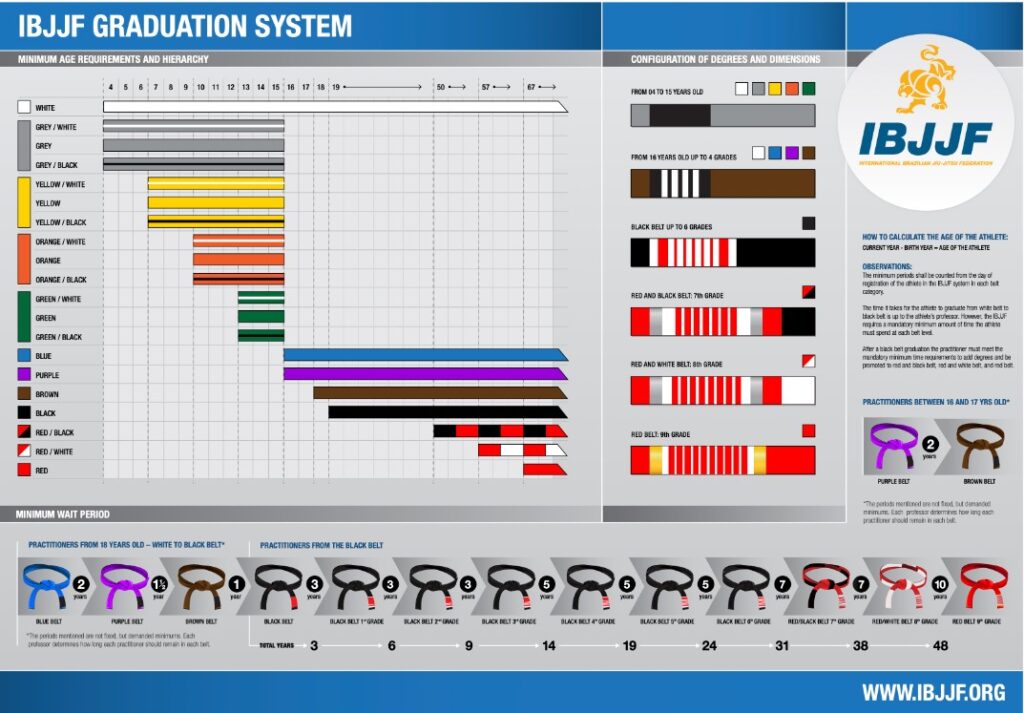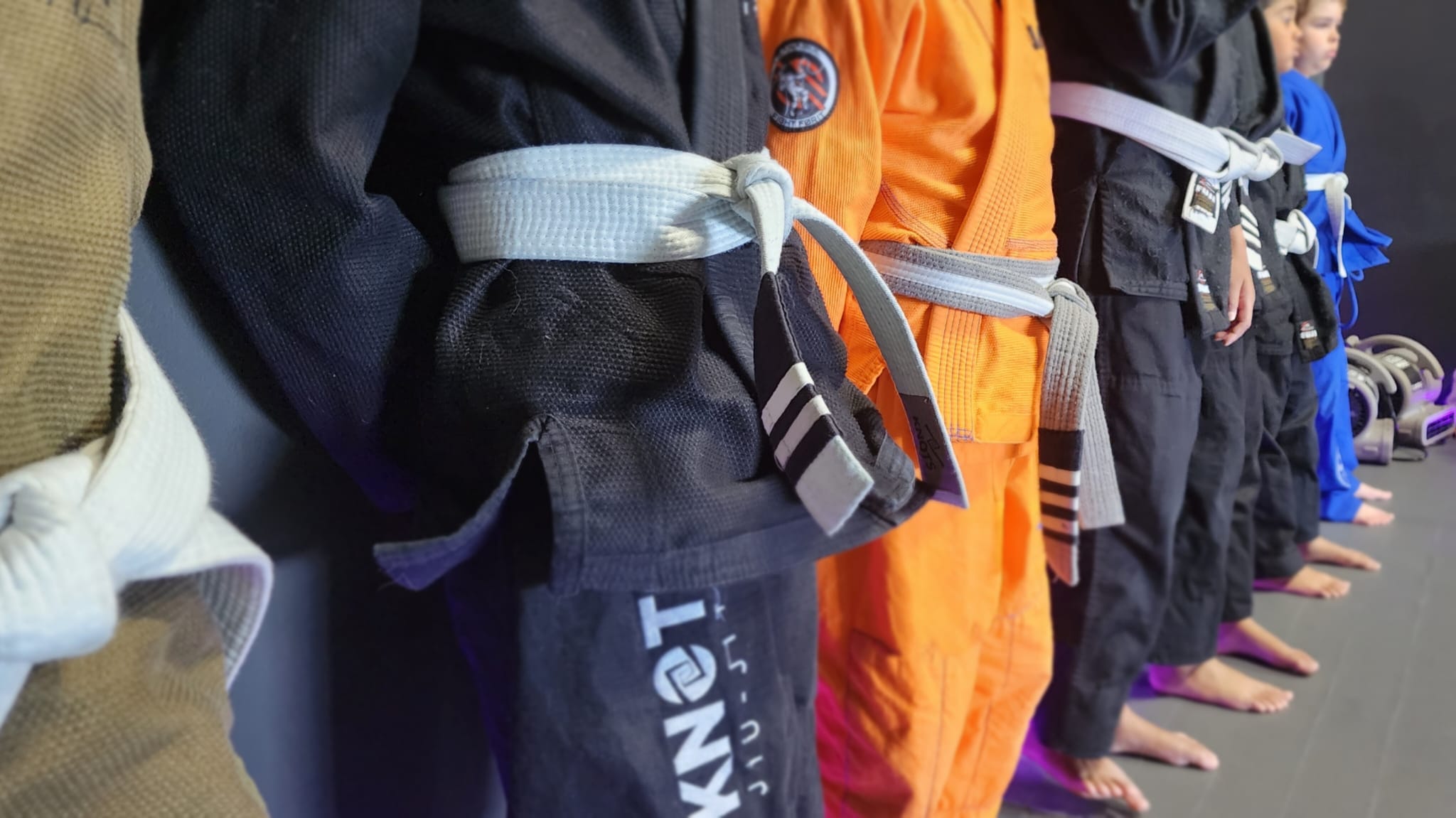Brazilian Jiu-Jitsu employs a structured belt ranking system to recognize and celebrate students’ accomplishments. Progress in BJJ encompasses a spectrum of attributes, such as knowledge, skills, experience, and even behavior. These elements collectively contribute to a student’s growth in the discipline. While the customary practice is to don colored belts when wearing a BJJ gi, the hierarchy of ranks persists even when training without the traditional uniform (no-gi).
The sequence of colored ranks, progressing from the lowest to the highest, unfolds as follows:
For KIDS:
- White
- Grey and White
- Grey
- Grey and Black
- Yellow and White
- Yellow
- Yellow and Black
- Orange and White
- Orange
- Orange and Black
- Green and White
- Green
- Green and Black
For ADULTS:
- White
- Blue
- Purple
- Brown
- Black
- Red and Black
- Red and White
- Red
Stripes:
In Brazilian Jiu-Jitsu, stripes adorning the belts are a visual representation of a student’s proficiency within a specific belt tier. With the exception of black, red and black, red and white, and red belts, the maximum allotment of stripes per belt is set at four. Additional stripes correspond to heightened expertise and more extensive experience. To illustrate, a purple belt adorned with three stripes signifies a higher level of experience and proficiency compared to a two-striped purple belt.
It is pertinent to note that the bestowal and utilization of stripes may vary across different schools. In some instances, stripes might not be utilized at all. An interesting facet is that instructors occasionally elevate a student to a higher colored belt prior to the student achieving the full complement of stripes associated with their existing belt level. Notably, the most esteemed governing body in this realm, IBJJF, advocates for the conferment of stripes. From our standpoint, incorporating stripes into your BJJ journey holds significant value.


